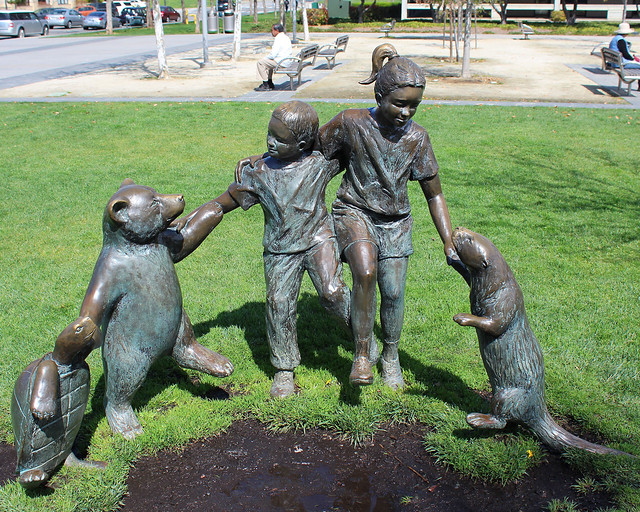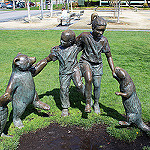The National Center for Biotechnology Information reports that artistic engagement is linked to psychological well-being, and art has healing effects on the mind. That is a testament to the true potential of art not only on an individual level, but on a communal one as well. In our busy lives as students, we try to juggle academics, extracurriculars and personal duties, and often find ourselves feeling stressed out. But public art is often overlooked, as it has a strong potential to promote health. By simply looking at art, our moods alter and our minds become more content. MVHS can utilize this fact to the students’ advantage — offering more opportunities for students to partake in the creation of public art at school. There are some examples of public art at MVHS, including on the D building near the basketball courts or on the choir room, but none are very visible.
Mike Sanchez of the Cupertino Fine Arts Commission says that the benefits of public art extend far past the health benefits. According to Sanchez, the mission of the Fine Arts Commission is to increase the recognition and appreciation of public art in Cupertino. This is done by reviewing and approving proposed public art plans within commercial developments that serve the public. Sanchez is a strong proponent of public art because of the more concrete benefits derived from it.
“The biggest [benefit] is to give a tangible sense of place and definition of the community in the physical sense. For example, the Mary Avenue Bridge is highly visible for tens of thousands of people everyday. Is that artwork? It depends on your interpretation of that,” Sanchez said. “It’s functional, but it’s also artistic. There are some sculptures at the end of the bridge, but the bridge itself is a work of art.”
Slideshow of public art in Cupertino. Photos used with permission by Mike Sanchez.

PTO Today, an organization that assists parent-teacher organizations in serving schools more effectively, states that murals can heighten student awareness and school pride through collaborative expression. Opening up opportunities for students to collaboratively create art has the potential to create a more tight-knit community.
Art Club officer senior Flora Xia endorses the conventional benefits of public art, as she believes it offers a way to channel student expression.
“It would give people a way to really visualize and see the product of what they do because if you create something that’s really big it, kind of jumps out at you,” Xia said. “I guess it would give [students] an outlet to express whatever they happen to be feeling at the time.”
However, she believes that there are drawbacks with public art surrounding its practicality, but that doesn’t mean we should give up on the concept.
“The issue with murals is that they’re very hard to do and very hard to organize,” Xia said. ”You have to set-up the supplies, find the time, and unless you have classes, you have to teach them how to make it.”
Xia and the other Art Club officers have previously considered creating murals and making them accessible to students.
“We’ve considered getting giant pieces of plywood and spray paints,” Xia said. “It would allow us to paint on bigger spaces rather than small canvases.”
By allowing students to partake in making art, or increasing the visibility and relatability of murals around campus — that is, incorporating student opinions when creating murals — we can achieve a greater sense of community and school pride. Sanchez believes that aside from increased mental well-being, art paves the way for feelings of inclusiveness.
“The definition of public art is broad in that it encompasses something that’s unique to the city, that’s appreciated by citizens, that represents the city as a specific or special place, and is memorable and gives citizens, or the community, a sense of pride in that place,” Sanchez said. “Cupertino, over time, we hope will have a sense of pride in itself because of its public art.”
Sanchez believes that the same concept applies to MVHS. If we were to promote an inclusive public art project, perhaps students would have more appreciation for their school and would more readily identify with it. Let’s not overlook the power of art in our everyday lives.








